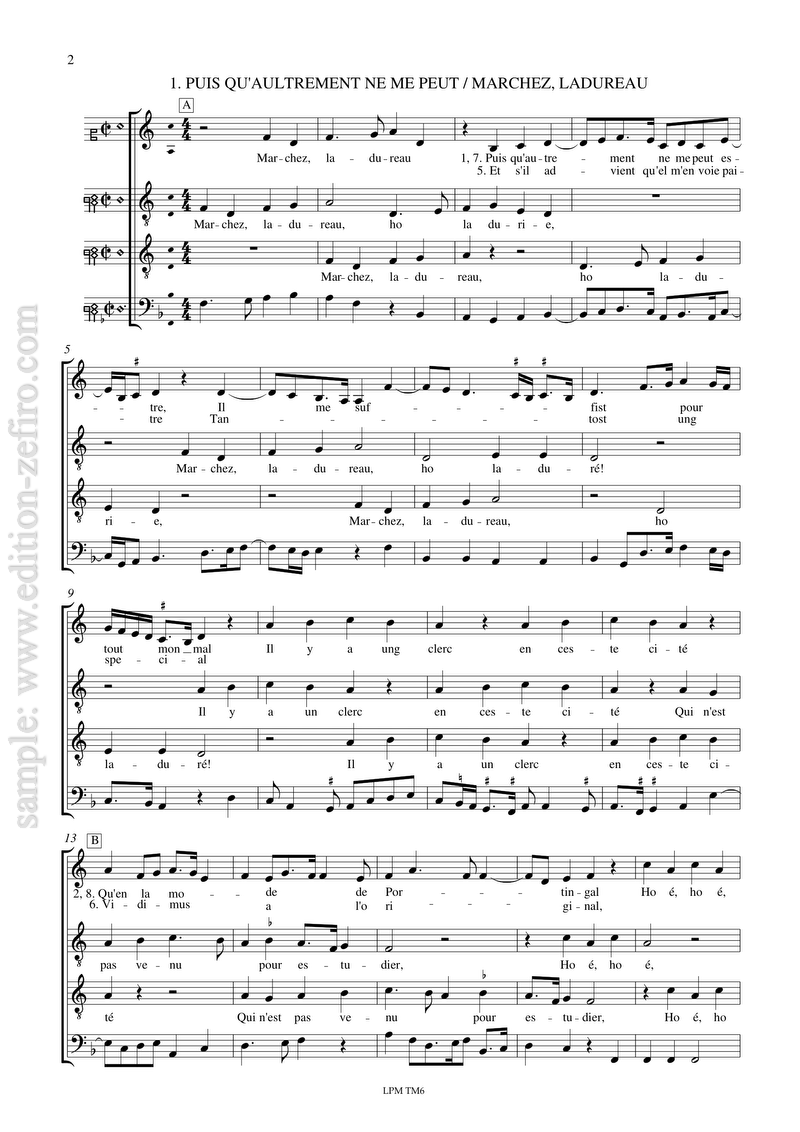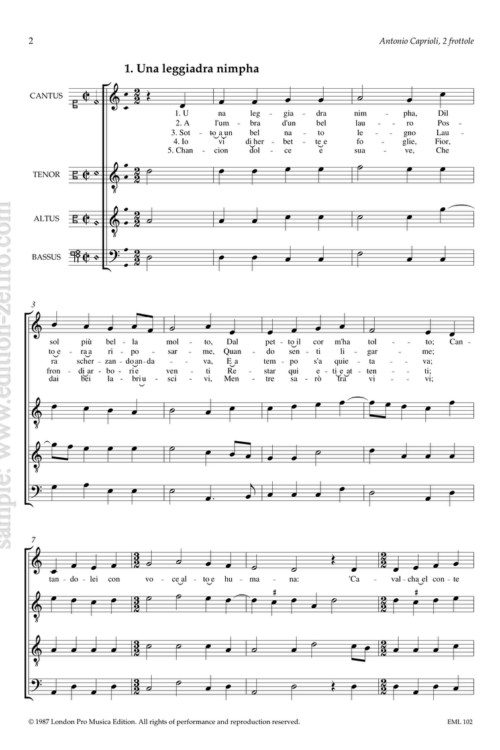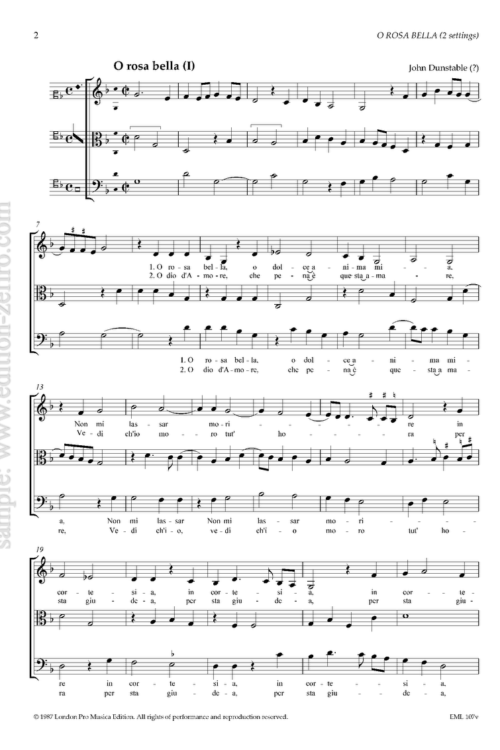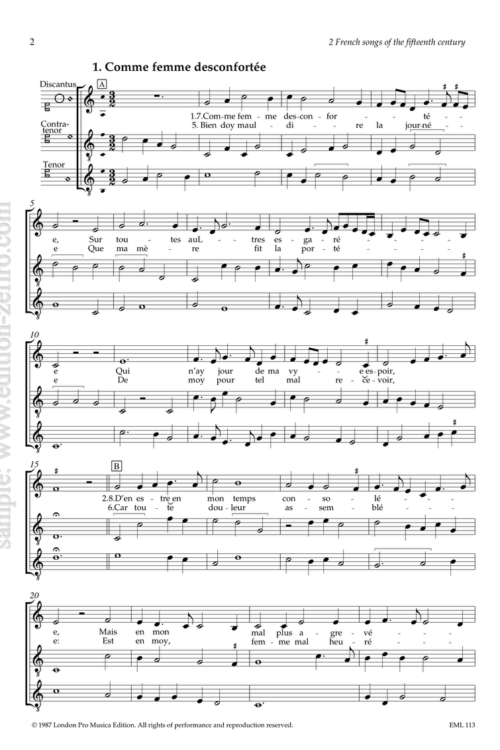These five pieces, from the Dijon Chansonnier, are skilful arrangements or popular melodies: the two inner parts have the melody, while the remaining parts provide lively counterpoints. A case of art concealing art.
These five quodlibets may appear at first sight to be something of a curiosity, but actually they are examples of a form that was quite widespread shortly after the middle of the fifteenth century, and which is reflected in half a dozen or so sources of the period. Guillaume Dufay composed such a piece, “Je vous pri /Ma tres douce amie / Tant que ma argent dura”, and there is a substantial group attributed to Antoine Busnois (see TM48 ↣), and many more anonymous pieces have survived, some in three, some in four parts. The five pieces printed here are taken from the largest source of 15th century quodlibets, MS 517 of the Bibliothèque Municipale in Dijon – the so-called Dijon Chansonnier; this manuscript, which was written for the Burgundian court around 1470-5, contains no less than 17 such pieces.
Strictly speaking the term “quodlibet’’ should be used for works made of fragments of melodies, rather than of complete tunes. American musicologists have coined the term “combinative chanson’’, which is accurate and descriptive, but a little clumsy.






